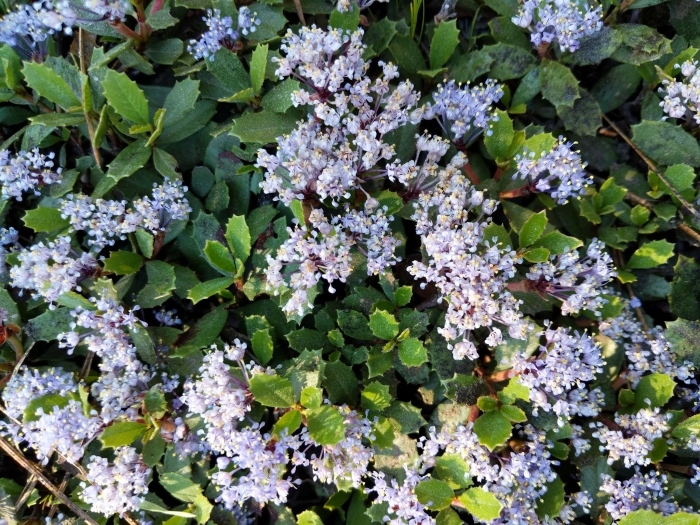Prostrate Ceanothus
(Ceanothus prostratus)
Prostrate Ceanothus (Ceanothus prostratus)
/
/

Rick Mandel
CC BY 4.0
Image By:
Rick Mandel
Recorded By:
Copyright:
CC BY 4.0
Copyright Notice:
Photo by: Rick Mandel | License Type: CC BY 4.0 | License URL: http://creativecommons.org/licenses/by/4.0/ | Rights Holder: Rick Mandel | Publisher: iNaturalist | Date Created: 2019-07-12T09:26:41-07:00 |

















































Estimated Native Range
Summary
Ceanothus prostratus, commonly known as Prostrate Ceanothus, is a low-growing evergreen shrub native to the chaparral and forested regions of western North America, particularly in the coastal ranges and the Sierra Nevada foothills. It is a decumbent shrub, typically less than 0.3 meters tall, with a spreading habit that can reach up to 3 meters wide. The leaves of Prostrate Ceanothus are small, oval, and oppositely arranged, with 3-9 sharp teeth along the margins, and are a glossy green color that adds texture to garden settings.
Prostrate Ceanothus is valued for its ground-covering ability, drought tolerance, and the profusion of blue to lavender flowers that appear from April to June, attracting pollinators such as bees and butterflies. The flowers are quite showy, making it a popular choice for rock gardens, slopes, and native plant landscapes. It is also used to stabilize soil in erosion-prone areas. This shrub thrives in full sun to light shade, requires minimal water once established, and prefers well-drained soils. While it is generally low-maintenance, it can be susceptible to root rot if overwatered or planted in poorly drained soils.CC BY-SA 4.0
Prostrate Ceanothus is valued for its ground-covering ability, drought tolerance, and the profusion of blue to lavender flowers that appear from April to June, attracting pollinators such as bees and butterflies. The flowers are quite showy, making it a popular choice for rock gardens, slopes, and native plant landscapes. It is also used to stabilize soil in erosion-prone areas. This shrub thrives in full sun to light shade, requires minimal water once established, and prefers well-drained soils. While it is generally low-maintenance, it can be susceptible to root rot if overwatered or planted in poorly drained soils.CC BY-SA 4.0
Plant Description
- Plant Type: Shrub
- Height: 0.5-0.5 feet
- Width: 4-8 feet
- Growth Rate: Slow
- Flower Color: Blue
- Flowering Season: Spring
- Leaf Retention: Evergreen
Growth Requirements
- Sun: Full Sun, Part Shade
- Water: Low
- Drainage: Medium, Fast
Common Uses
Bank Stabilization, Bee Garden, Bird Garden, Border Plant, Butterfly Garden, Drought Tolerant, Erosion Control, Fragrant, Groundcover, Hummingbird Garden, Low Maintenance, Salt Tolerant
Natural Habitat
Native to chaparral and forested regions of western North America, particularly in the coastal ranges and the Sierra Nevada foothills
Other Names
Common Names: Mahala-Mat, Squaw Carpet, Squawcarpet
Scientific Names: , Ceanothus prostratus, Ceanothus prostratus var. prostratus, Ceanothus prostratus var. laxus, Ceanothus prostratus subsp. prostratus, Ceanothus prostratus f. albiflorus,
GBIF Accepted Name: Ceanothus prostratus Benth.